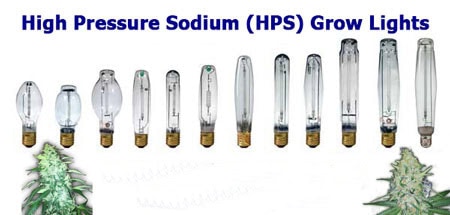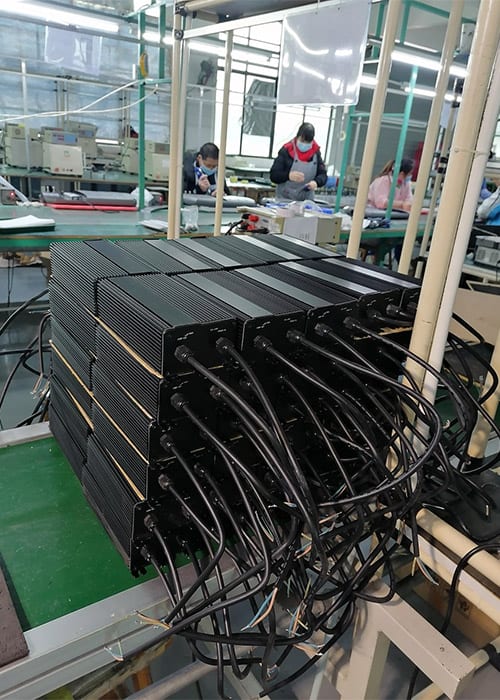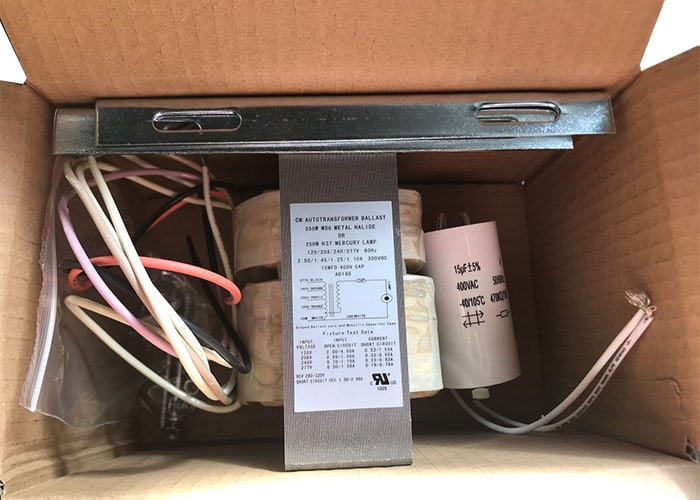Using a 600-watt bulb with a 400-watt ballast gives you a problem with not enough power, which can either result in reduced performance or be a safety hazard.
No, you don’t use a 600-watt bulb with a 400-watt ballast. If you mismatch the wattage of your bulb and ballast, you can have bad lighting, your ballast can fail, and you have a safety hazard. You need to make sure you match the wattage of the ballast to the wattage of the bulb.
Let’s talk about why you need to match the light ballast and bulb.
Understanding the Role of Ballasts in Lighting
A ballast is a critical component in lighting systems, especially for high-intensity discharge (HID) lamps like metal halide, high-pressure sodium, and mercury vapor lamps. Its role is to regulate the electrical current to the bulb, ensuring proper startup and operation. If the wrong ballast is used, such as a 400W ballast with a 600W bulb, the system becomes unstable.
When the wattages do not match, the bulb may not receive enough power to function correctly, leading to dim light or flickering. Worse, a mismatch can cause the ballast to overheat, potentially resulting in damage or fire hazards. Properly matching your ballast with your bulb ensures a stable, efficient, and safe lighting system.
Consequences of Using a 600W Bulb with a 400W Ballast
Using a 600W bulb with a 400W ballast presents several risks and consequences that can affect both safety and performance.
- Reduced Light Output: The 600W bulb will not receive enough power, leading to poor lighting performance. The bulb may appear dim, reducing its intended efficiency.
- Ballast Overload: A 400W ballast is not designed to handle the demands of a 600W bulb. Over time, the ballast may overheat or fail prematurely due to the stress of trying to supply power beyond its capacity.
Additionally, this mismatch could result in:
- Premature Bulb Failure: The bulb’s lifespan will be significantly reduced, requiring more frequent replacements.
- Safety Risks: Overheating can lead to fire hazards, posing serious risks to the installation environment.

Can You Use a 400W Bulb in a 600W Ballast?
While using a 600W bulb with a 400W ballast is problematic, the reverse scenario—using a 400W bulb with a 600W ballast—also creates issues. Overdriving a lower-wattage bulb with a higher-wattage ballast can result in:
- Overheating: Excess power will push the 400W bulb beyond its capacity, causing it to overheat.
- Shortened Bulb Life: The excess power will cause the bulb to burn out more quickly, wasting money on replacements.
Moreover, using a higher-wattage ballast to drive a lower-wattage bulb increases the risk of safety issues, including possible bulb explosion.
How to Properly Match a Bulb to a Ballast
Matching the wattage of your bulb and ballast is crucial to ensure the proper functioning of your lighting system. Each ballast is rated for specific wattages and lamp types, which is indicated by an ANSI code. This code helps ensure compatibility between the ballast and the bulb. For example, a ballast rated for a 400W metal halide or high-pressure sodium bulb should only be paired with a bulb of the same wattage and type.
Failing to match these components leads to inefficiencies, safety risks, and unnecessary costs.

Can You Use a Higher Wattage Ballast?
Using a higher-wattage ballast than required is not recommended. While it might seem like the bulb will function, the higher wattage can drive too much current into the bulb, leading to overheating and a reduction in the bulb’s lifespan. Some modern ballasts are dimmable and can adjust to lower wattages, but this should only be done if the ballast and bulb are both designed for this flexibility.
Consequences of Using Lower Wattage Bulbs with Higher Wattage Ballasts
Installing lower wattage bulbs in higher wattage ballasts leads to inefficiency and potential hazards. Here are some key issues that arise:
- Higher Energy Consumption: The ballast will still draw power at its rated wattage, regardless of the lower wattage bulb, leading to unnecessary energy waste.
- Increased Risk of Fire: Overdriving a lower wattage bulb increases the chance of it overheating and potentially causing a fire, especially in prolonged use scenarios.
Proper pairing of wattage prevents these risks and ensures the longevity of both the bulb and ballast.
Alternatives and Safe Solutions
If you find yourself needing a 600W bulb’s brightness but only have a 400W ballast, the safest solution is to upgrade both your ballast and bulb to a 600W system. This ensures compatibility and optimal performance. Another option is to use dimmable ballasts, which can be adjusted to run bulbs at different wattages, providing flexibility.
Always consult the manufacturer’s guidelines when selecting a ballast and bulb pairing to avoid any operational or safety issues.
Final Words:
To be safe and get the best performance, you need to match your lamp ballast with the wattage of your bulb. You can’t use a 600-watt bulb with a 400-watt ballast. You’ll have bad performance, it’s not safe, and you could damage your system.


